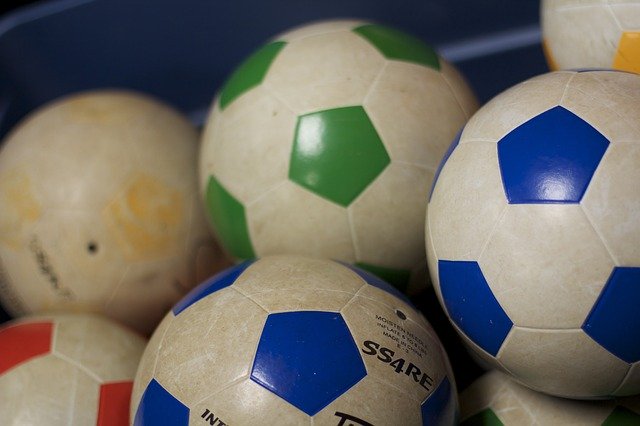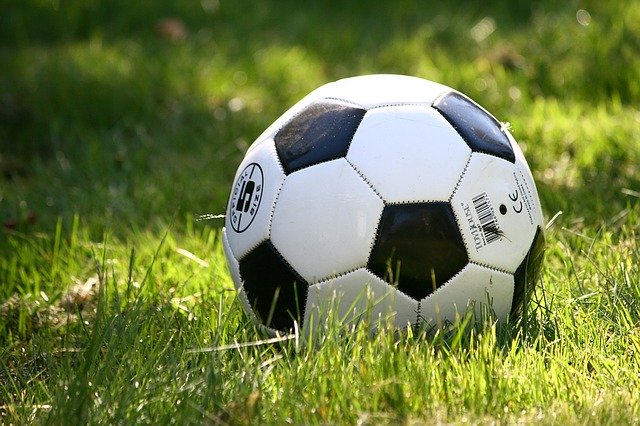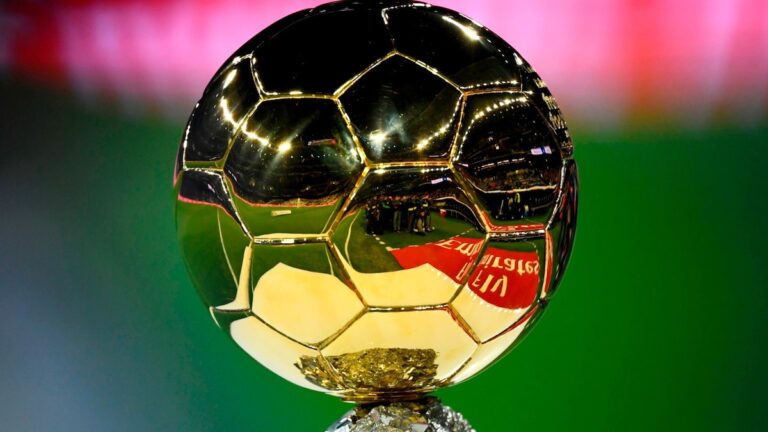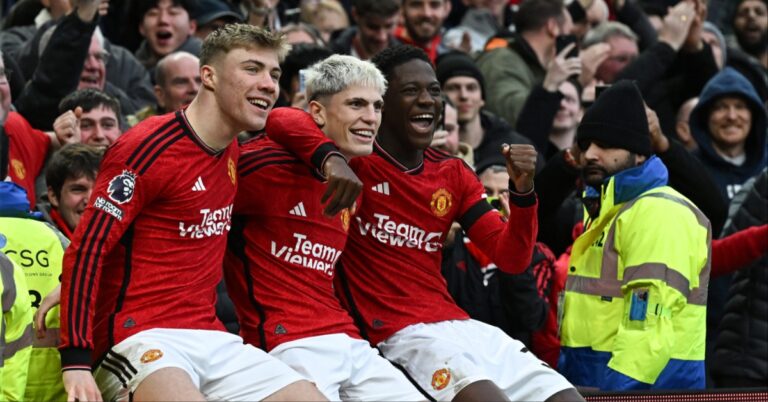Soccer Ball Physics

The following article researching soccer ball physics was first published in Physics World magazine, June 1998 pp25–27.
The Soccer Ball Physics
Bill Shankly, the former manager of Liverpool football club, once said: “Football is not about life or death. It is more important than that.” This month at the World Cup in France, millions of football fans will get that same feeling for a few, short weeks. Then the event will be over, and all that will remain will be a few repeats on television and the endless speculation about what might have happened.
It is this aspect of football that its fans love, and others hate. What if that penalty had gone in? What if the player hadn’t been sent off? What if that free kick hadn’t bent around the wall and gone in for a goal?
Many fans will remember the free kick taken by the Brazilian Roberto Carlos in a tournament in France last summer. The ball was placed about 30 m from his opponents’ goal and slightly to the right. Carlos hit the ball so far to the right that it initially cleared the wall of defenders by at least a meter and made a ball-boy, who stood meters from the goal, duck his head. Then, almost magically, the ball curved to the left and entered the top right-hand corner of the goal – to the amazement of players, the goalkeeper and the media alike.
Apparently, Carlos practiced this kick all the time on the training ground. He intuitively knew how to curve the ball by hitting it at a particular velocity and with a particular spin. He probably did not, however, know the physics behind it all.
Aerodynamics of sports balls
The first explanation of the lateral deflection of a spinning object was credited by Lord Rayleigh to work done by the German physicist Gustav Magnus in 1852. Magnus had actually been trying to determine why spinning shells and bullets deflect to one side, but his explanation applies equally well to balls. Indeed, the fundamental mechanism of a curving ball in football is almost the same as in other sports such as baseball, golf, cricket and tennis.
Spinning Ball
Consider a ball that is spinning about an axis perpendicular to the flow of air across it (see left). The air travels faster relative to the center of the ball where the periphery of the ball is moving in the same direction as the airflow. This reduces the pressure, according to Bernouilli’s principle.
The opposite effect happens on the other side of the ball, where the air travels slower relative to the center of the ball. There is therefore an imbalance in the forces and the ball deflects – or, as Sir J J Thomson put it in 1910, “the ball follows its nose”. This lateral deflection of a ball in flight is generally known as the “Magnus effect”.
The forces on a spinning ball that is flying through the air are generally divided into two types: a lift force and a drag force. The lift force is the upwards or sidewards force that is responsible for the Magnus effect. The drag force acts in the opposite direction to the path of the ball.
Let us calculate the forces at work in a well taken free kick. Assuming that the velocity of the ball is 25-30 ms-1 (about 70 mph) and that the spin is about 8-10 revolutions per second, then the lift force turns out to be about 3.5 N.
The regulations state that a professional football must have a mass of 410-450 g, which means that it accelerates by about 8 ms-2. And since the ball would be in flight for 1 s over its 30 m trajectory, the lift force could make the ball deviate by as much as 4 m from its normal straight-line course. Enough to trouble any goalkeeper!
The drag force, FD, on a ball increases with the square of the velocity, v, assuming that the density, r, of the ball and its cross-sectional area, A, remain unchanged: FD = CDrAv2/2. It appears, however, that the “drag coefficient”, CD, also depends on the velocity of the ball.
For example, if we plot the drag coefficient against Reynold’s number – a non-dimensional parameter equal to rv D /µ, where D is the diameter of the ball and µ is the kinematic viscosity of the air – we find that the drag coefficient drops suddenly when the airflow at the surface of the ball changes from being smooth and laminar to being turbulent (see right).
When the airflow is laminar and the drag coefficient is high, the boundary layer of air on the surface of the ball “separates” relatively early as it flows over the ball, producing vortices in its wake. However, when the airflow is turbulent, the boundary layer sticks to the ball for longer. This produces late separation and a small drag.
The Reynold’s number at which the drag coefficient drops therefore depends on the surface roughness of the ball. For example, golf balls, which are heavily dimpled, have quite a high surface roughness and the drag coefficient drops at a relatively low Reynold’s number (~ 2 x 104). A football, however, is smoother than a golf ball and the critical transition is reached at a much higher Reynold’s number (~ 4 x 105).
Drag vs Speed
The upshot of all of this is that a slow-moving football experiences a relatively high retarding force. But if you can hit the ball fast enough so that the airflow over it is turbulent, the ball experiences a small retarding force (see right). A fast-moving football is therefore double trouble for a goalkeeper hoping to make a save – not only is the ball moving at high speed, it also does not slow down as much as might be expected. Perhaps the best goalkeepers intuitively understand more soccer ball physics than they realize.
In 1976 Peter Bearman and colleagues from Imperial College, London, carried out a classic series of experiments on golf balls. They found that increasing the spin on a ball produced a higher lift coefficient and hence a bigger Magnus force. However, increasing the velocity at a given spin reduced the lift coefficient.
What this means for a football is that a slow-moving ball with a lot of spin will have a larger sideways force than a fast-moving ball with the same spin. So as a ball slows down at the end of its trajectory, the curve becomes more pronounced.
Roberto Carlos revisited
How does all of this explain the free kick taken by Roberto Carlos? Although we cannot be entirely sure, the following is probably a fair explanation of what went on.
Carlos kicked the ball with the outside of his left foot to make it spin anticlockwise as he looked down onto it. Conditions were dry, so the amount of spin he gave the ball was high, perhaps over 10 revolutions per second. Kicking it with the outside of his foot allowed him to hit the ball hard, at probably over 30 ms-1 (70 mph).
The flow of air over the surface of the ball was turbulent, which gave the ball a relatively low amount of drag. Some way into its path – perhaps around the 10 m mark (or at about the position of the wall of defenders) – the ball’s velocity dropped such that it entered the laminar flow regime.
This substantially increased the drag on the ball, which made it slow down even more. This enabled the sideways Magnus force, which was bending the ball towards the goal, to come even more into effect. Assuming that the amount of spin had not decayed too much, then the drag coefficient increased.
This introduced an even larger sideways force and caused the ball to bend further. Finally, as the ball slowed, the bend became more exaggerated still (possibly due to the increase in the lift coefficient) until it hit the back of the net – much to the delight of the physicists in the crowd.
Current research into football motion
There is more to football research than simply studying the motion of the ball in flight. Researchers are also interested in finding out how a footballer actually kicks a ball. For example, Stanley Plagenhof of the University of Massachusetts in the US has studied the kinematics of kicking – in other words, ignoring the forces involved. Other researchers, such as Elizabeth Roberts and co-workers at the University of Wisconsin, have done dynamic analyses of kicking, taking the forces involved into account.
These experimental approaches have produced some excellent results, although many challenges still remain. One of the most critical problems is the difficulty of measuring the physical motion of humans, partly because their movements are so unpredictable. However, recent advances in analyzing motion with computers have attracted much attention in sports science, and, with the help of new scientific methods, it is now possible to make reasonably accurate measurements of human motion.
For example, two of the authors (TA and TA) and a research team at Yamagata University in Japan have used a computational scientific approach coupled with the more conventional dynamical methods to simulate the way players kick a ball. These simulations have enabled the creation of “virtual” soccer players of various types – from beginners and young children to professionals – to play in virtual space and time on the computer.
Sports equipment manufacturers, such as the ASICS Corporation, who are sponsoring the Yamagata project, are also interested in the work. They hope to use the results to design safer and higher performance sports equipment that can be made faster and more economically than existing products.
How To Curve A Soccer Ball
The movement of players was followed using high-speed video at 4500 frames per second, and the impact of the foot on the ball was then studied with finite-element analysis. The initial experiments proved what most footballers know: if you strike the ball straight on with your instep so that the foot hits the ball in line with the ball’s center of gravity, then the ball shoots off in a straight line. However, if you kick the ball with the front of your foot and with the angle between your leg and foot at 90° (see left), it will curve in flight. In this case, the impact is off-center. This causes the applied force to act as a torque, which therefore gives the ball a spin.
The experimental results also showed that the spin picked up by the ball is closely related to the coefficient of friction between the foot and the ball, and to the offset distance of the foot from the ball’s center of gravity. A finite-element model of the impact of the foot on the ball, written with DYTRAN and PATRAN software from the MacNeal Schwendler Corporation, was used to numerically analyze these events. This study showed that an increase in the coefficient of friction between the ball and the foot caused the ball to acquire more spin. There was also more spin if the offset position was further from the center of gravity.
Two other interesting effects were observed. First, if the offset distance increased, then the foot touched the ball for a shorter time and over a smaller area, which caused both the spin and the velocity of the ball to decrease. There is therefore an optimum place to hit the ball if you want maximum spin: if you hit the ball too close or too far from the center of gravity, it will not acquire any spin at all.
The other interesting effect was that even if the coefficient of friction is zero, the ball still gains some spin if you kick it with an offset from its center of gravity . Although in this case there is no peripheral force parallel to the circumference of the ball (since the coefficient of friction is zero), the ball nevertheless deforms towards its center, which causes some force to act around the center of gravity. It is therefore possible to spin a football on a rainy day, although the spin will be much less than if conditions were dry.
Of course, the analysis has several limitations. The air outside the ball was ignored, and it was assumed that the air inside the ball behaved according to a compressive, viscous fluid-flow model. Ideally, the air both inside and outside the ball should be included, and the viscosities modeled using Navier-Stokes equations.
It was also assumed that the foot was homogeneous, when it is obvious that a real foot is much more complicated than this. Although it would be impossible to create a perfect model that took every factor into account, this model does include the most important features.
Looking to the future, two of us (TA and TA) also plan to investigate the effect of different types of footwear on the kicking of a ball. Meanwhile, ASICS is combining the Yamagata finite-element simulations with biomechanics, physiology and materials science to design new types of football boots. Ultimately, however, it is the footballer who makes the difference – and without ability, technology is worthless.
The final whistle
So what can we learn from Roberto Carlos? If you kick the ball hard enough for the airflow over the surface to become turbulent, then the drag force remains small and the ball will really fly. If you want the ball to curve, give it lots of spin by hitting it off-center. This is easier on a dry day than on a wet day, but can still be done regardless of conditions.
The ball will curve most when it slows down into the laminar flow regime, so you need to practice to make sure that this transition occurs in the right place – for example, just after the ball has passed a defensive wall. If conditions are wet, you can still get spin, but you would be better off drying the ball (and your boots).
Nearly 90 years ago J J Thomson gave a lecture at the Royal Institution in London on the dynamics of golf balls. He is quoted as saying the following: “If we could accept the explanations of the behavior of the ball given by many contributors to the very voluminous literature which has collected around the game…I should have to bring before you this evening a new dynamics, and announce that matter, when made up into [golf] balls obeys laws of an entirely different character from those governing its action when in any other conditions.”
In football, at least, we can be sure that things have moved on.
Further reading
https://physicsworld.com/a/the-physics-of-football/
C B Daish 1972 The Physics of Ball Games (The English University Press, London)
S J Haake (ed) 1996 The Engineering of Sport (A A Balkema, Rotterdam)
R D Mehta 1985 Aerodynamics of sports balls Ann. Rev. Fluid Mech. 17 151-189
Questions about Pressure and Soccer Balls

How does the amount of air in a soccer ball affect how far it travels when struck by the same force?
The amount of air or air pressure in a soccer ball effects how far the ball will travel when struck by the same force. The higher air pressure that is put into a soccer ball improves the ball’s rebound off the foot of a player. More energy is transferred to a “stiff” ball in an elastic collision. In other words, the ball deforms less during the impact, so there’s less energy lost to deformation.
Does the atmospheric air pressure effect how far a soccer ball travels when struck by the same force?
The atmospheric air pressure (the air surrounding the ball) also plays a role in how far a ball travels. At lower pressure, there’s less air friction. You can compare it to kicking the ball in a tank of water to kicking the ball on the moon. Balls go farther at high altitude because of the reduced drag from the air, which is thinner as you go higher up. So there’s a case where “reduced” air pressure makes the ball go farther.
Also, the materials that the soccer ball is made out of effects how far the ball will travel…but that is another question and experiment.
How much air pressure should I put into a soccer ball?
Use Proper Air PressureDo not over or under pressurize a ball. Use the manufactures recommended air pressure that is printed on most balls. Most soccer balls have a pressure rating of 6 to 8 lbs. or 0.6 or 0.8 BAR. It is recommended that you use a pressure gauge to measure the exact amount of pressure in a ball after inflating and before use.
BAR or PSI or LBS?
Some soccer balls have recommended pressure values indicated in BAR while others have the values indicated in PSI or LBS. To convert the pressure values, use the following formulas:To convert BAR (KGS) to PSI (Lbs.):Answer = 14.5037 X The amount of BAR(KGS)For example: A soccer ball has a recommended pressure of 0.6 BAR labeled on it. To convert BAR in Pounds Per Square Inch (PSI), multiply 0.6 times 14.5037. The answer is 8.7 PSI or Lbs.To convert PSI (Lbs.) to BAR(KGS):Answer = .068948 X The amount of PSI(Lbs.)For example: A soccer ball has a recommended pressure of 7.9 Lbs. (PSI) labeled on it. To convert Pounds Per Square Inch (PSI) into BAR, multiply 7.9 times .068948. The answer is 0.545 BAR.
How Do I inflate my soccer balls?
Soccer balls lose air pressure over time. Sometimes over a few days (soccer balls that use butyl bladders keep air pressure longer than balls that use latex bladders). Be sure to check the pressure frequently to make sure the ball is properly inflated. Therefore, invest in a good ball pump, have a supply of inflation needles and use a low pressure gauge to measure for proper inflation. Before you first inflate a soccer ball, place a couple drops of silicone oil or silicone lubricant spray or glycerin oil into the valve. You can purchase one of the oils or spray at your local hardware store. Using one of the lubricants will improve the life of the valve and lubricate the valve for easy insertion of the inflation needle. Always moisten the inflation needle before you insert it into the valve. Preferably, use some silicon oil, silicon spray or glycerin oil to moisten the needle. However; most people use spit…yuk, but that is not recommended. Manufacturers recommend that you reduce the air pressure in your match balls after a game to reduce the amount of stress on the ball seams or stitching. Be sure to inflate the ball back to proper pressure before the match.
Why do I always have to pump up even expensive balls?
Many balls use bladders made out of latex. Natural Latex Rubber bladders offer the softest feel and response, but do not provide the best air retention. Micro pores slowly let air escape. Balls with natural rubber bladders need to be re-inflated more often than balls with butyl bladders. Even after one or two days, the latex bladder will leak enough air so that you will have to inflate the ball back to recommended pressure. Some balls use carbon-latex bladders in which the carbon powder helps to close the micro pores. Soccer balls with carbon latex bladders usually increase air retention to approximately one week. Of course, check the ball for punctures that may cause the air to leak out.Soccer Balls with Butyl bladders or PU bladders offer an excellent combination of feel and air retention and can be found in most middle to upper priced balls. Air retention is significantly increased to weeks and months instead of days compared to balls with latex bladders.
Why do some soccer balls get bigger over time?
Many soccer balls do tend to get larger over time. This is due to the pressure of the air in the bladder against the linings and cover. Over time the material and stitching may stretch out causing the ball to become larger. Also, soccer ball abuse may cause the stitching to loosen and the ball to exp
Questions about Soccer Ball Material Physics
I’m still working on this part…check back soon.
Questions about Curving a Soccer Ball?
How does a ball curve when you kick it? For the answer to this question and others relating to the physics of a curving soccer ball, click here.


![Tallest Soccer Players: Top 10 [2023 updated]](https://soccerballworld.com/wp-content/uploads/2023/02/tallest-soccer-players-768x391.jpg)

